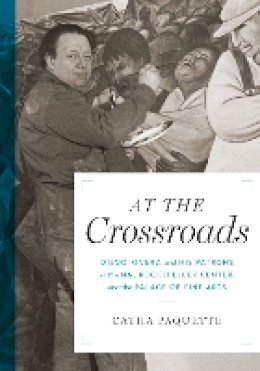
At the Crossroads: Diego Rivera and his Patrons at MoMA, Rockefeller Center, and the Palace of Fine Arts
Catha Paquette
Collaborations during the Great Depression between the Mexican artist and Communist activist Diego Rivera and institutions in the United States and Mexico were fraught with risk, as the artist occasionally deviated from course, serving and then subverting his patrons. Catha Paquette investigates controversies surrounding Rivera’s retrospective at the Museum of Modern Art in New York City, his Rockefeller Center mural Man at the Crossroads, and the Mexican government’s commissioning of its reconstruction at the Palace of Fine Arts in Mexico City. She proposes that both the artist and his patrons were using art for extraordinary purposes, leveraging clarity and ambiguity ... Read more
In recounting Rivera’s shifts in strategy from collaboration/exploitation to antagonism/conflict, Paquette highlights the extent to which the artist was responding to politico-economic developments and facilitating alignment/realignment among leftist groups for and against Stalin. Although the artwork that resulted from these instances of patronage had the potential to serve conflicting purposes, Rivera’s images and the protests that followed the destruction of the Rockefeller Center mural were integral to a surge in oppositional expression that effected significant policy changes in the United States and Mexico.
Show LessProduct Details
About Catha Paquette
Reviews for At the Crossroads: Diego Rivera and his Patrons at MoMA, Rockefeller Center, and the Palace of Fine Arts
Latin American Research Review
"A strongly supported, clearly written account that brings together the views of previous authors which [Paquette] uses as a springboard for her own."
Bulletin of Latin ... Read more
